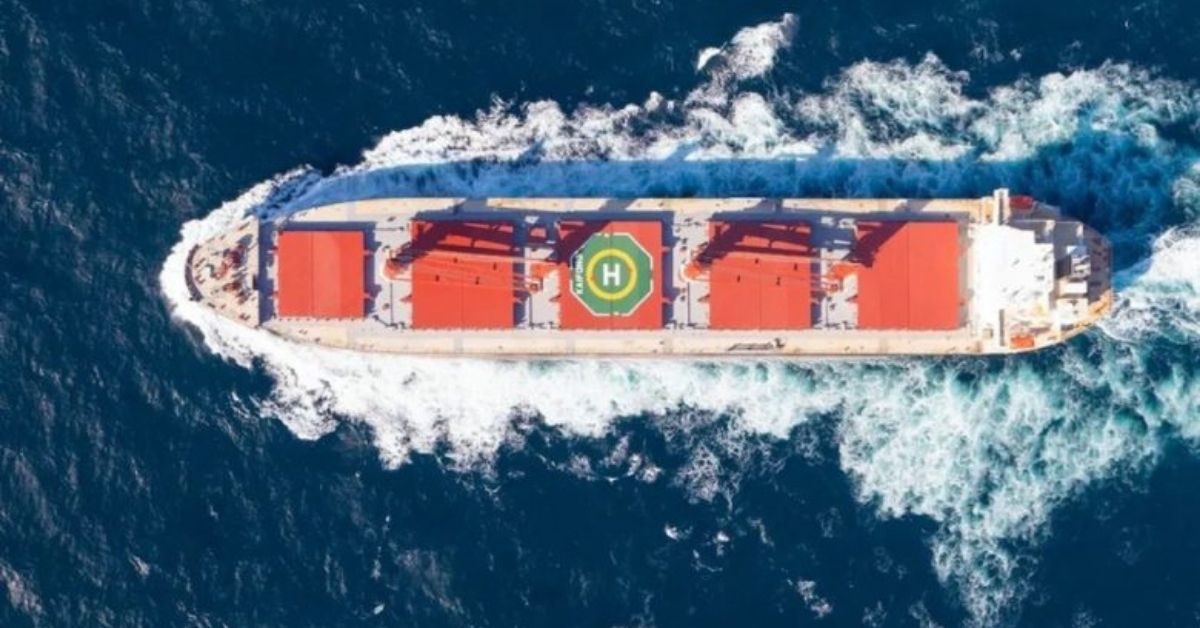Swire Bulk is among the confirmed first dry bulk owners to be actively moving containers on its dedicated fleet of bulk carriers, with a host of other well known names in the sector looking to follow suit.
“It’s obviously less efficient to stow containers on a bulk vessel, but it can provide critical supply chain support for shippers that have urgent requirements,” commented Rob Aarvold, general manager at Swire Bulk, in confirming today news that some of Swire’s bulk carriers are now moving containers.
Another Asian owner, Pacific Basin, is also now offering some box shipments on its handy fleet, sources in Hong Kong tell Splash.
Meanwhile, Ulrik Andersen, the CEO of Oslo-based Golden Ocean Group, speaking with Splash yesterday confirmed that his company is looking at moving containers on some of the company’s 83 ships.
Andersen said Golden Ocean was investigating it as a source of new revenue streams, looking at boxes as both backhaul cargoes but more interestingly combining cargoes of iron ore or coal with containers on deck but stressing very much to Splash that this research is still in its early stages.
The Golden Ocean fleet is made up of 48 capesizes, 33 panamaxes and two ultramaxes.
A raft of dry bulk owners are actively moderating stowage plans to accommodate high paying boxes – with handy and supra owners contacted by Splash in recent weeks readying to make their container entry.
According to Alphaliner, the biggest bulkers ever seen carrying a large amount of containers were the 70,000 dwt conbulkers such as the CAST Beaver operated by Bermuda-based liner operator CAST, which was amalgamated into CP Ships in 1995, between North Europe and Montreal, until the early 1990s. The CAST ships could carry up to 1,463 teu.
A host of P&I Clubs have issued guidance in recent weeks to dry bulk owners thinking of shipping containers.
North P&I advised, “Owners should first liaise with underwriters, and the vessel’s classification society and Flag State to seek their guidance and advice as to what modifications, if any, would be required to comply with their requirements.”
The club added: “It’s unusual for a bulk carrier to be fitted out with suitable fittings, equipment and lashings to fulfil this obligation without modification and strengthening of cargo securing arrangements. Additional equipment may be required as well as a need to perform additional strength and stability assessments. Crew capabilities should be also assessed.”
The UK P&I Club recently informed clients to be aware of stowage rules if accepting containers onboard bulk carriers.
Moreover, the club has warned that the existing strength calculations for deck and hatch covers on modern bulk carriers usually only allow for so-called green sea loads instead of cargo weight. However, the allowable load density can be increased by reinforcements, subject to approval by the vessel’s class. Similarly, any tank top-loading needs to be specially considered and approved.
On top of that, bulk carrier owners eager to accept some high paying containers, will need to think about updated stability analysis, while with so many fires emanating from containers these days, the insurer has advised owners to buy additional firefighting equipment.
The dearth of cellular container tonnage in the charter market has also forced many companies to tap into the multipurpose (MPP) and open hatch bulk carrier markets to cover their needs this year, sending MPP rates into record territory.
Source : splash247








